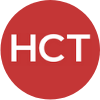How Investing in Talent Development Can Solve Knowledge Gap Challenges Across the Healthcare Industry
Investing in training and development signals to employees that they are valued, and the organization would rather build the talent from within than find new staff.
Recently we've talked about major issues within healthcare that have led to the industry's current staffing crisis — issues ranging from burnout to a shortage of workers to increasing demand for care from an aging U.S. population. A global pandemic now entering year three has only made this crisis more acute: increasingly desperate organizations are soliciting personnel through unheard-of sign-on bonuses and benefits, and may further push workers out of healthcarealtogether. The COVID crisis also forced some healthcare facilities to take funds they reserved for other priorities, such as staff development and leadership training, and reallocate them to the pandemic response.
When the media covers this issue, it has largely focused on the shortage of frontline workers delivering care — yet healthcare organizations are also feeling the impact of the staffing crisis among its leadership ranks. Without executives who understand their organization's strengths, weaknesses, mission and culture — as well as the broader industry — a facility can struggle to continue to meet the needs of the community while staying financially viable. A recent study exploring the challenges of leadership in healthcare organizations identified the following important responsibilities:
Organizational structure: Coordinating among departments, allocating financial resources, maintaining facility buildings, minimizing bureaucracy
Human resources: Addressing the shortage of healthcare workers, mitigating burnout, managing and training staff
The nature of the work: The stress of healthcare work (a particular concern during the pandemic), reducing and resolving conflicts
Leaders: Leadership development and training, executive turnover, decreased opportunity for long-term planning, building relationships
How can a healthcare organization, already struggling to maintain staffing, meet these responsibilities in the near-term while simultaneously building out leaders for the future? One option worth exploring is investing in training and development support.
Bridge the Knowledge Gap
Coaching, training and professional development have been notoriously difficult initiatives to consistently implement across the healthcare sector, largely due to the nature of shift work and the diversity of positions, skills and needs. According to the Association for Talent Development, healthcare workers spend 34% less time on training a year than other industries.
And yet the value of training and development across healthcare cannot be overstated. In my experience, ongoing training help reduce compliance and patient safety risks, improves morale and can decrease turnover and burnout. It also narrows the knowledge gap by allowing organizations to fill critical roles more quickly with internal talent. With training, coaching and professional development, staff are better able to support their organization's future success by building their leadership acumen.
Organizations that supplement their hiring and recruiting practices by bringing in seasoned leaders to train, develop and educate staff are seeing improvements in patient care, staff aptitudes, employee satisfaction and leadership skills. What's even more impressive is that during these increasingly difficult times, bringing in specialized healthcare leaders focused on implementing training and professional development programs isn't only creating growth and opportunities for staff, it's also providing much-needed reinforcements.
Perhaps the biggest advantage to training, in addition to overcoming the current skills shortage, is training provides additional stability in a time of turbulent transition and change. Investing in training and development signals to employees that they are valued, and the organization would rather build the talent from within than find new staff. This creates a deeper sense of loyalty and increases engagement and productivity. Above all, training reduces turnover and absenteeism — helping organizations retain highly skilled people and ensuring those skilled experts have the tools they need to share their knowledge with junior staff.
How to Develop Talent
Organizations, culture, teams, leadership and goals — these are all different in each organization, and developing talent, if done right, means alignment is created within teams and individuals. It's a twofold mission and responsibility of making sure the team is successful while, at the same time, making sure each individual is as well. People want to be deeply committed to what they are doing and have the skills, resources and support to advance. Ultimately, in the healthcare industry, this also means making sure each person's well-being is looked after as well as providing opportunities for growth. Companies that start with this premise and commitment know who within their organization is both interested and a good fit culturally to take on more responsibility at the same pace as opportunities and needs arise.
Make and take time to sit with employees. Understand where they are in their careers, what their aspirations are, what challenges they are facing and where they see their role advancing. Truly listen to leaders when they share issues. Resist the urge to settle with "that's just how the industry/person/team/problem is." By understanding what's not only driving and motivating people but also creating situations that cause misalignment, organizations can generate creative solutions. Maybe it's challenge-specific training, identifying a mentor who can provide on-site support and guidance or hiring interim surge staffing so team members hand off tasks and responsibilities gradually while ensuring there is strong and sufficient technical knowledge transfer.
One of the biggest takeaways of a learning-centric culture is that it allows organizations to develop deep talent benches and not just retain and promote great talent, but also find solutions quickly. Problems are solved by experts, and the longer problems persist and those gaps can't be filled, the more likely current team members are to lose the drive and energy and motivation — and the more time that is spent in misalignment, the lower overall engagement. It's a vicious cycle.
Final Thoughts
Upon realizing they have a vacancy in leadership, many healthcare organizations will succumb to the pressure of the staffing shortage and seek to fill it as quickly as possible, without considering the impact training and development of current staff can have on its long-term success. Our industry requires individuals to possess and maintain highly specialized skills and work in increasingly difficult conditions. Providing a learning-centric culture with a focus on professional development is going to be essential for building from within, retaining staff and positively impacting patient care.
Previously published on Newsweek.


